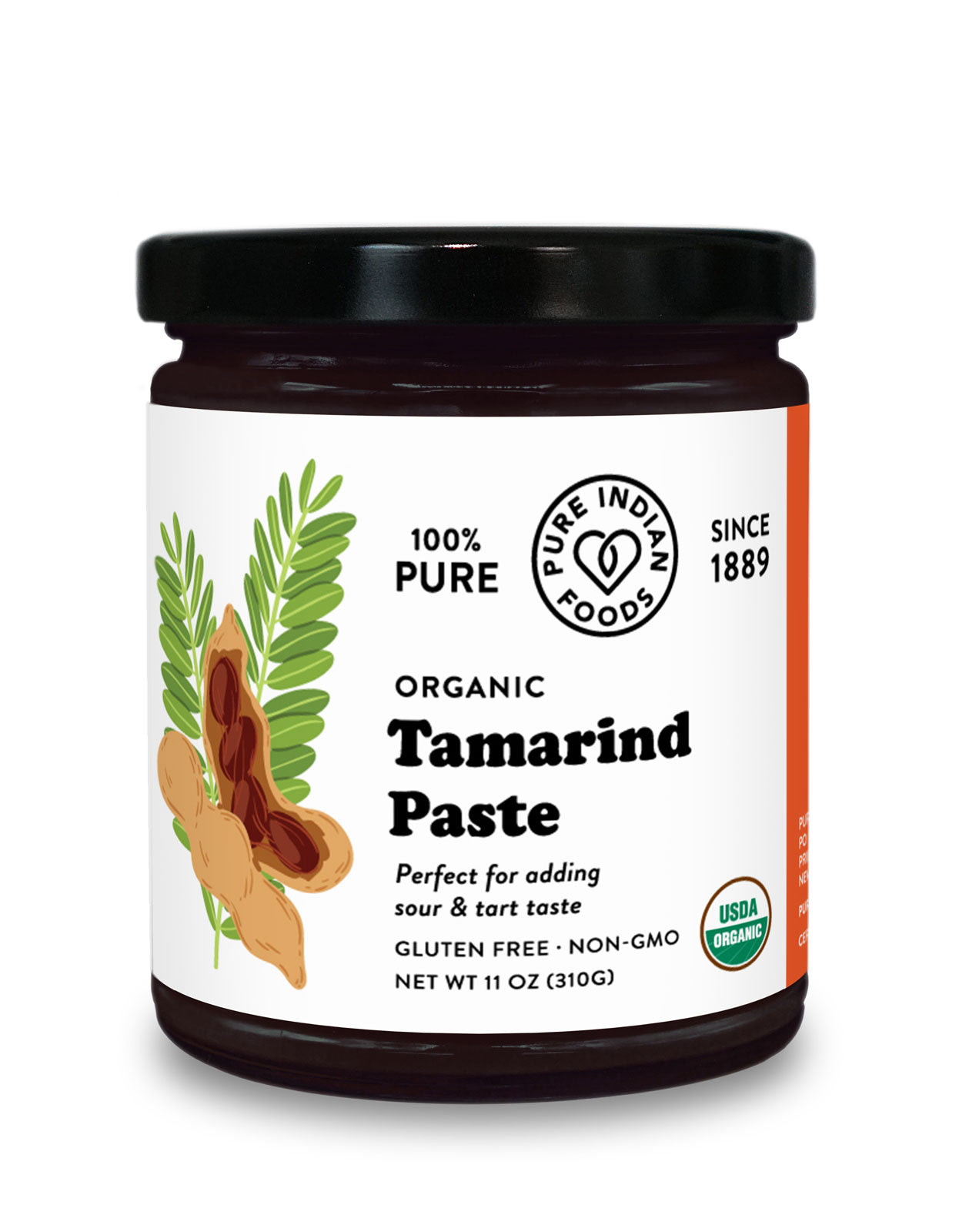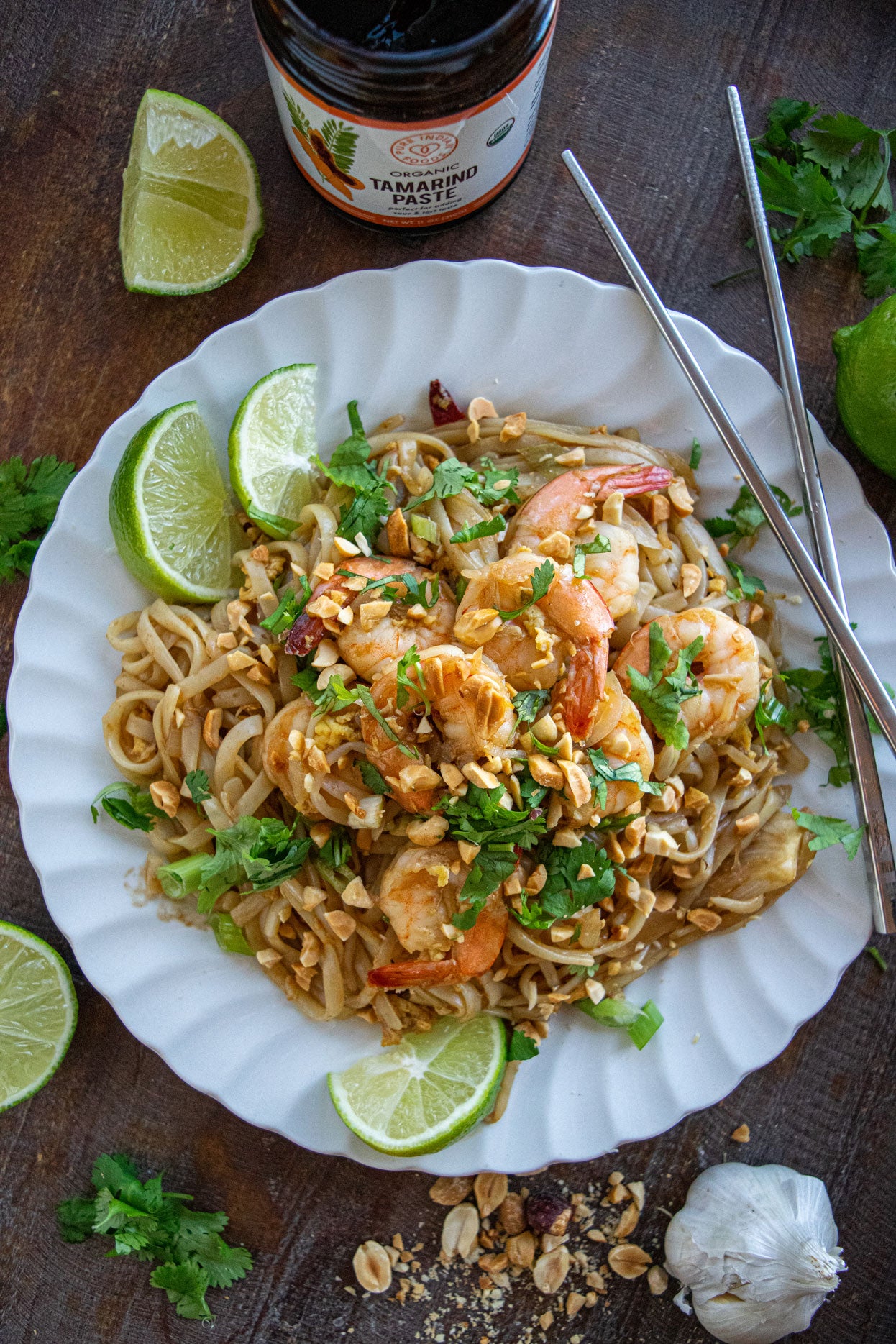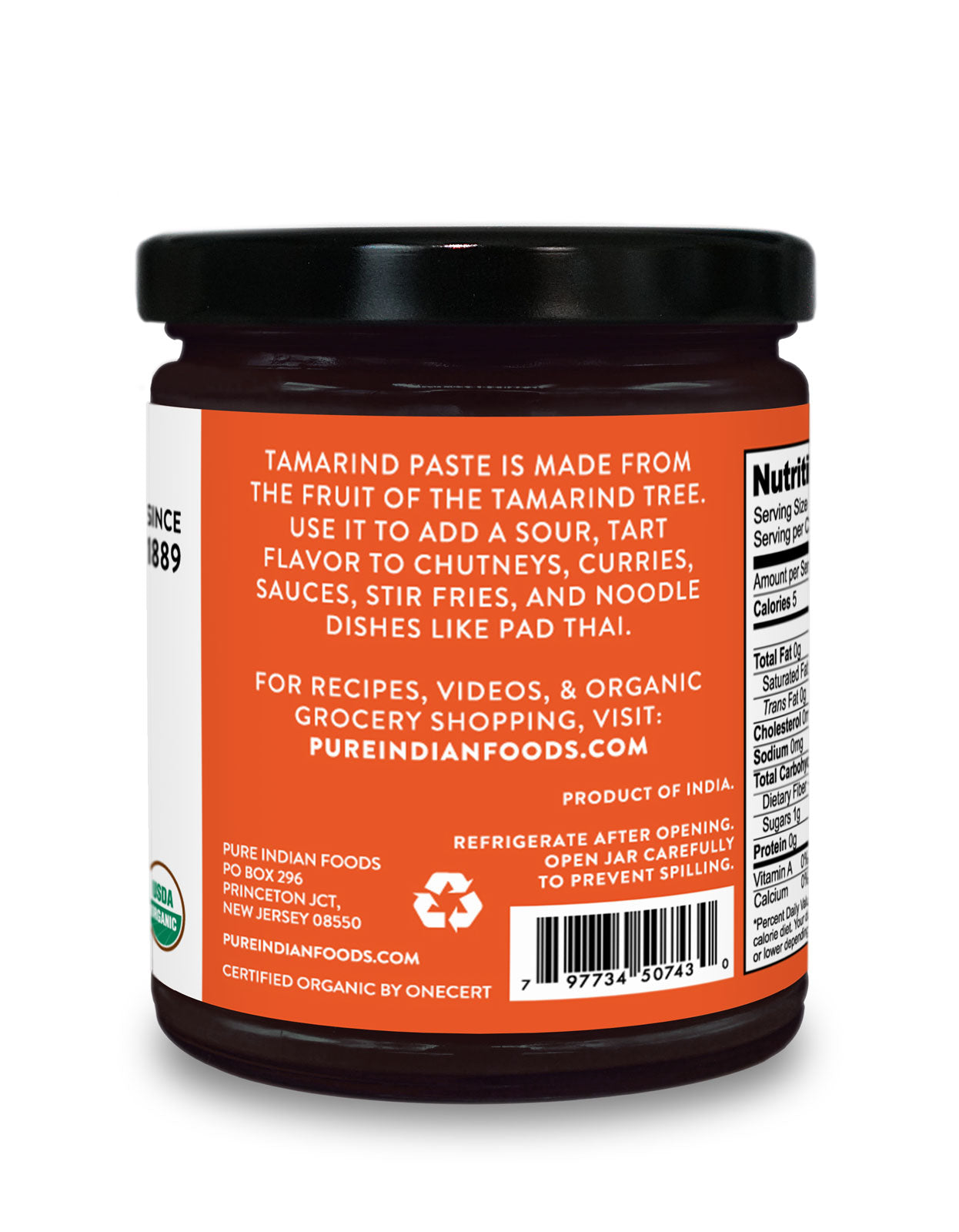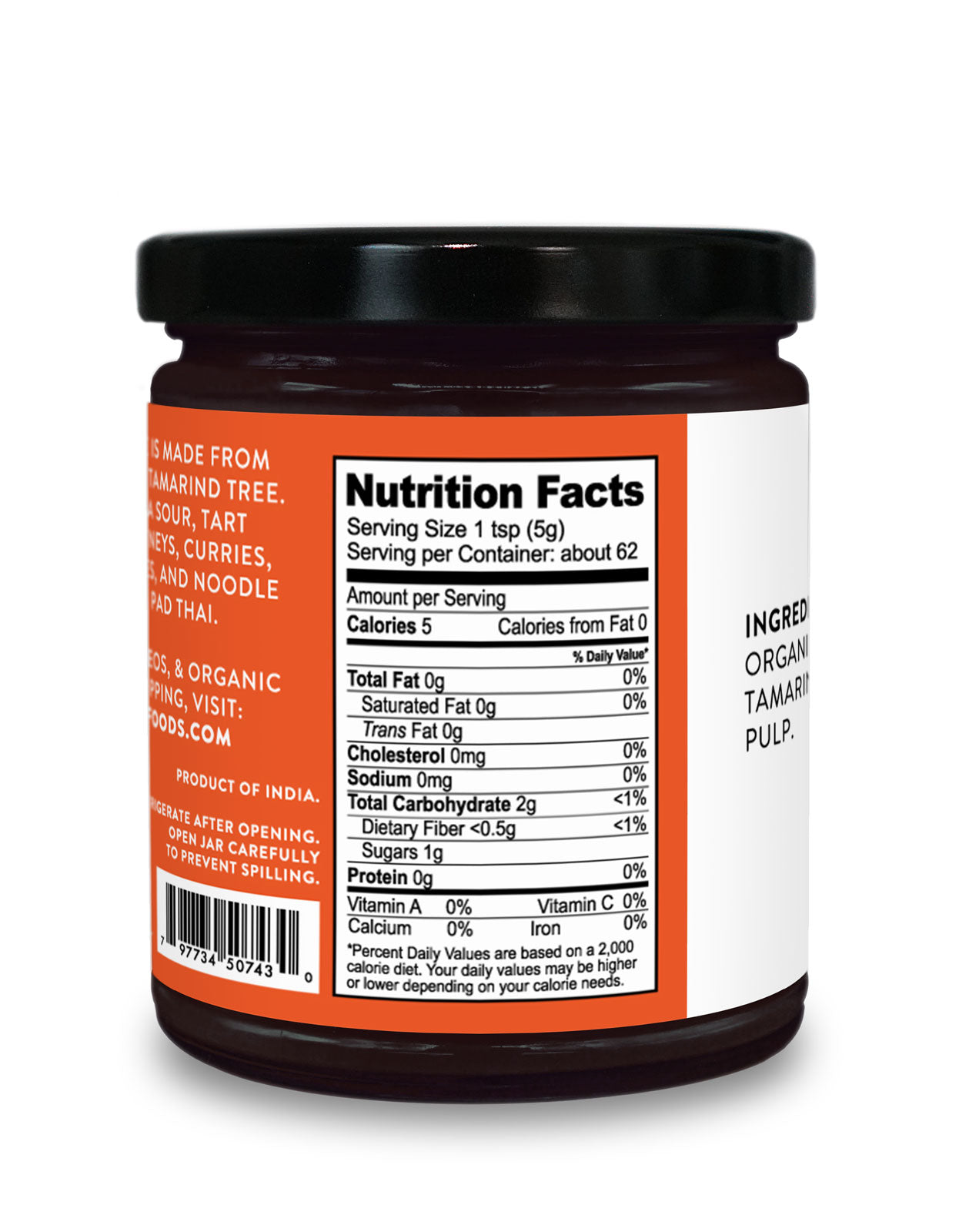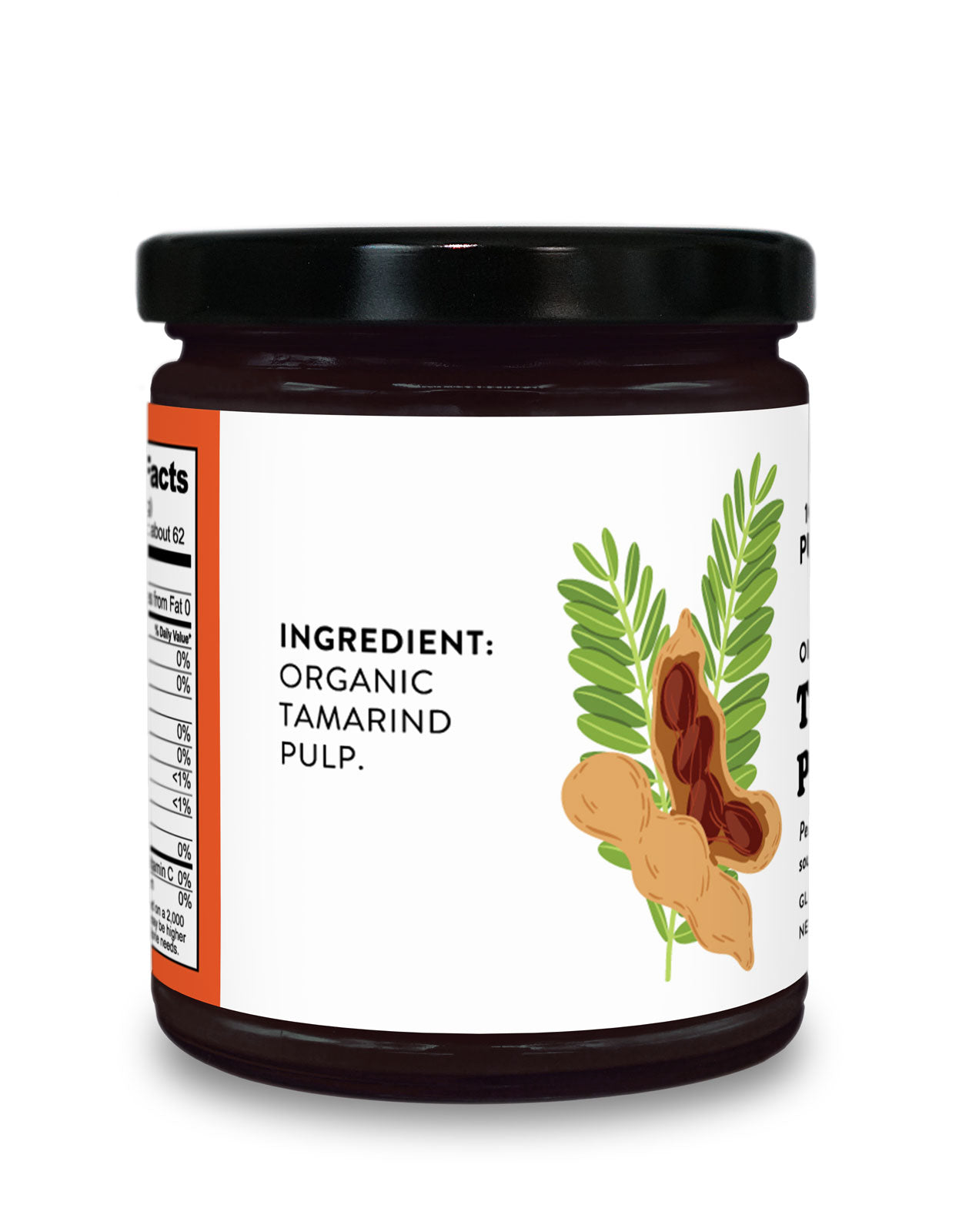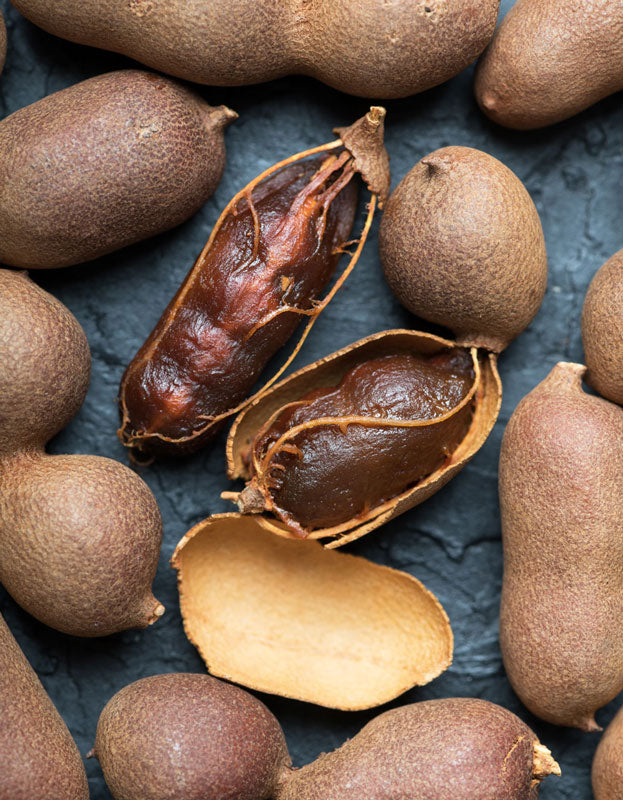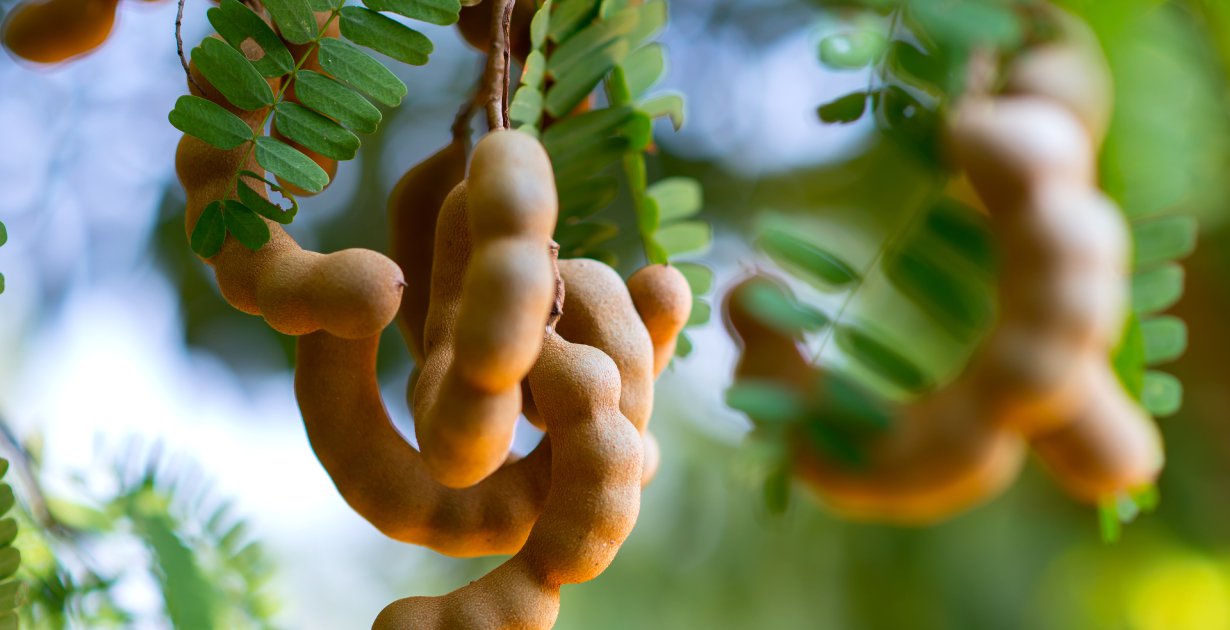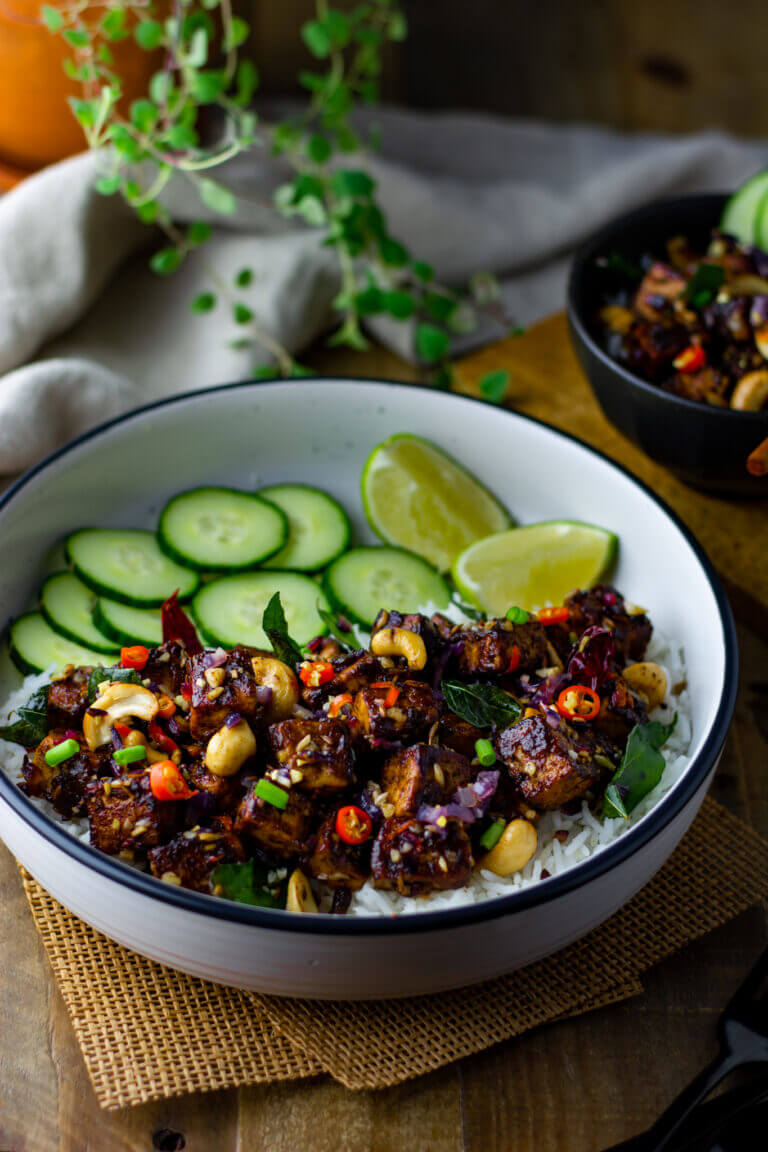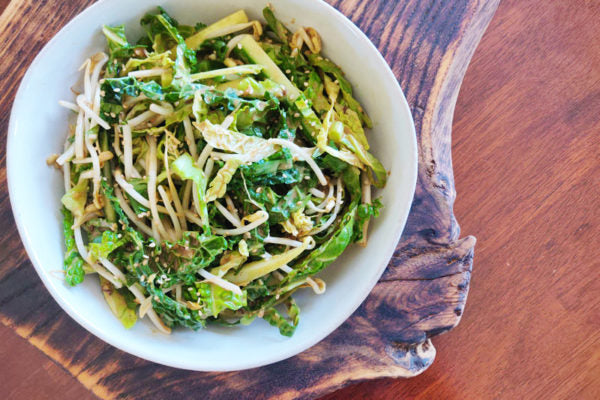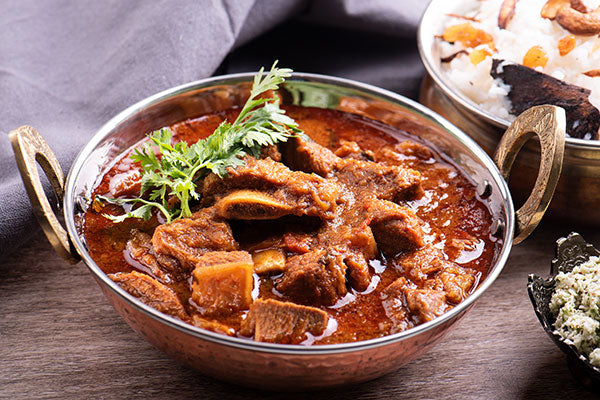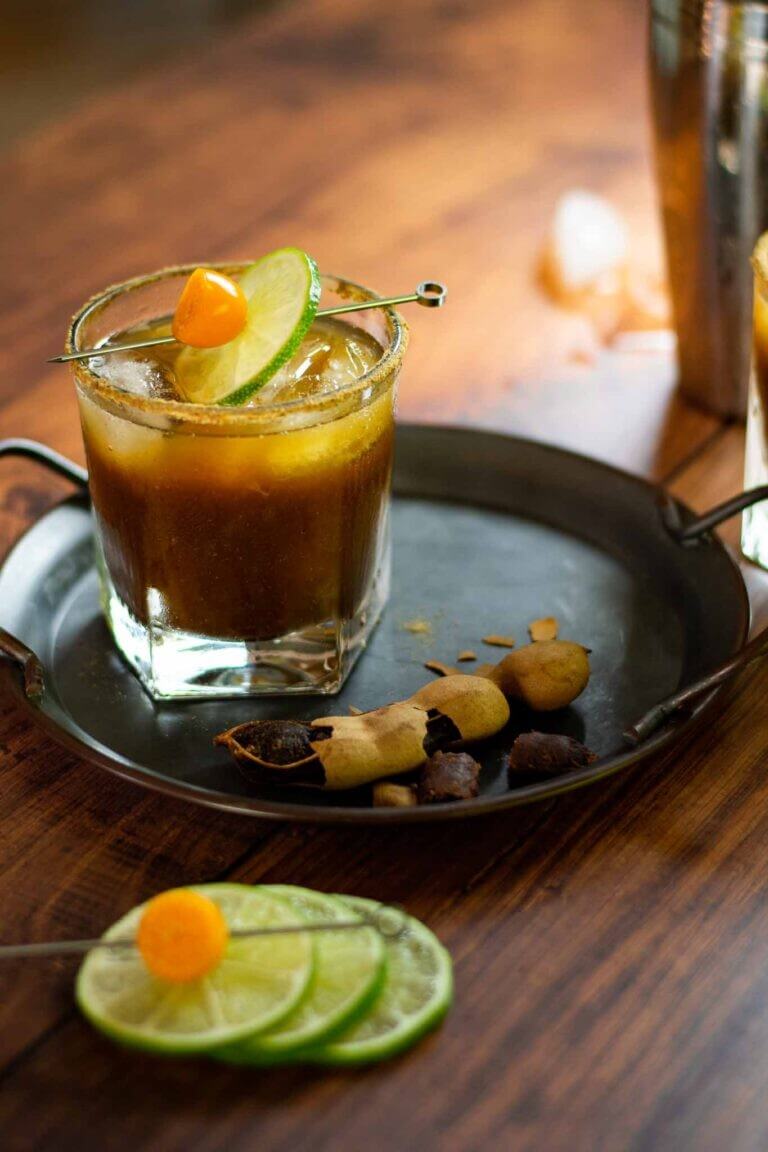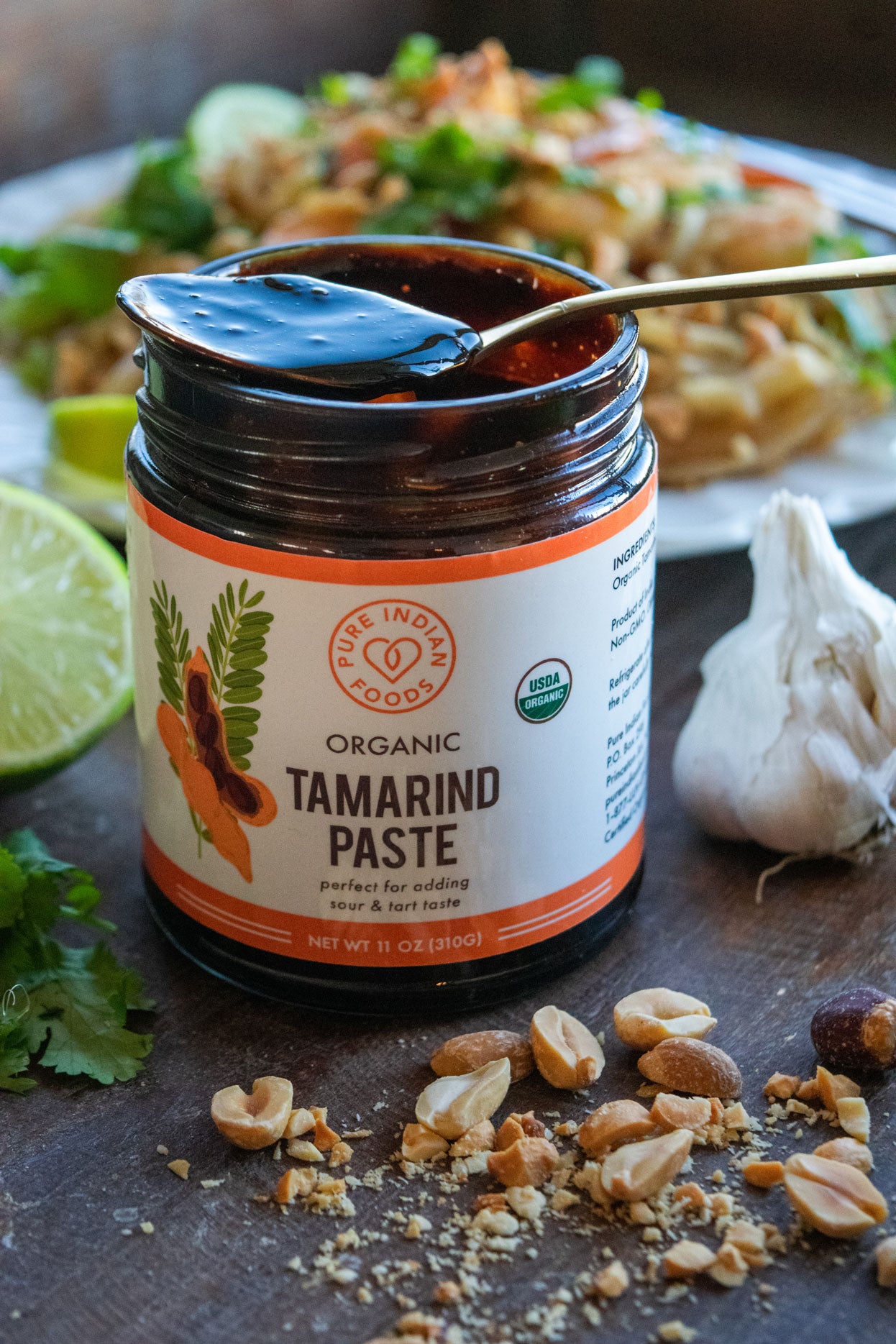
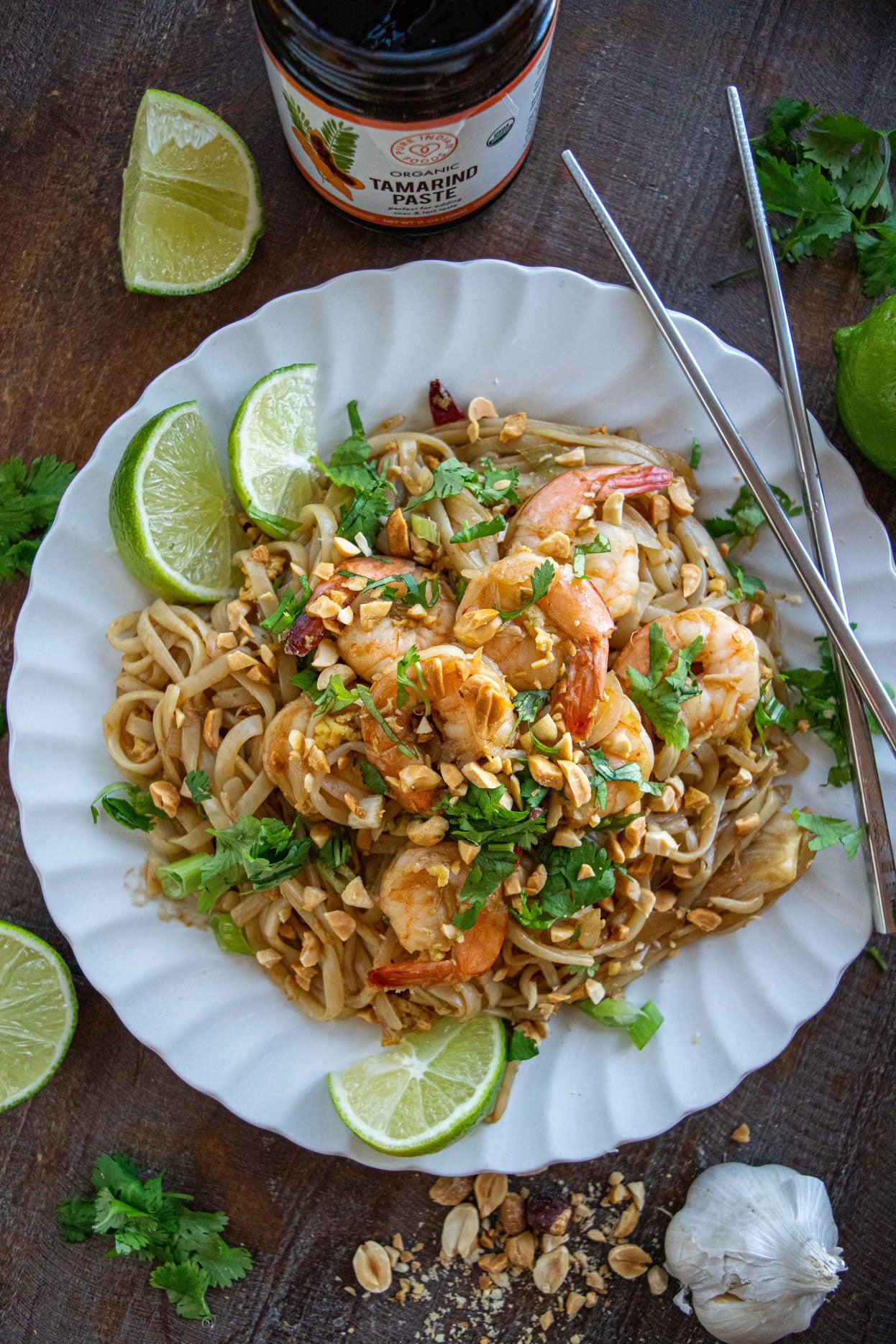
What is Tamarind Paste?
Our organic tamarind paste is a puree made with the fruit of the tamarind tree. These beanlike pods contain a dark brown fibrous, sticky fruit that becomes sweeter as it ripens.
Our tamarind paste is a puree made with less ripe pods, making it perfect for adding a sour and tart punch to chutneys, curries, sambhars, marinades, stir-fries, and noodle dishes like pad thai. Just use it straight from the jar, no extra work needed!
Other brands of tamarind concentrate are frequently watered down and mixed with preservatives and pickling agents like sodium benzoate and citric acid. Not ours! We are proud to provide you with 100% pure tamarind puree with absolutely nothing else added.
The sour taste in tamarind comes from tartaric acid. The acidity means that tamarind can be used much like citrus in cooking.
In India, tamarind concentrate is used to add sourness to curries. In Thai or Chinese cuisine, it’s added to hot-and-sour soups. In the Middle East, it’s used to make many refreshing summer drinks, or simply eaten raw.
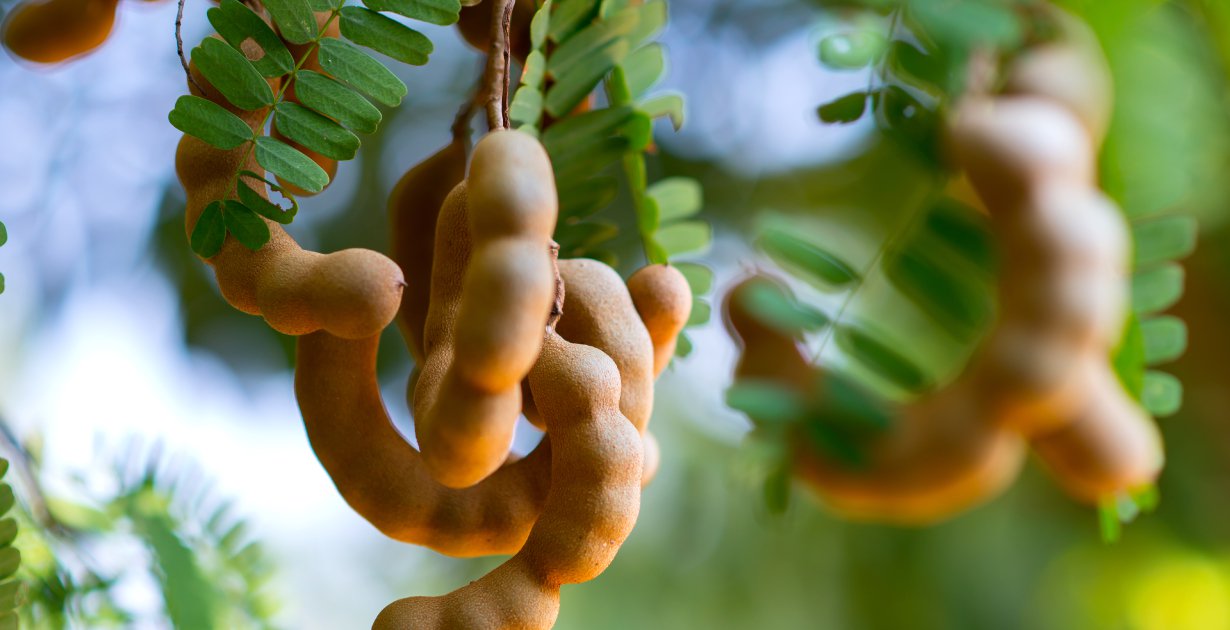
What is the tamarind fruit like?
Tamarind is a tangy, tropical, nutrient-rich fruit native to Africa which has been widely cultivated in Asia and the tropics of the Americas, primarily in Mexico and the Caribbean. If you're fortunate, you may come across tamarind in the pod when shopping for Southeast Asian, Indian, or Latin American ingredients.
Most fruit sold in the pod is already ripe. While the unripe fruit is intensely sour, the ripe fruit is sticky and sweetly sour. After peeling away the brown outer shell, you expose the sticky brown fruit inside, which can be pulled away from the seed pod.
Common Questions
Is tamarind paste gluten free?
Is tamarind paste gluten free?
Is tamarind paste the same as tamarind concentrate?
Is tamarind paste the same as tamarind concentrate?
Is tamarind paste spicy?
Is tamarind paste spicy?
Is tamarind concentrate low FODMAP?
Is tamarind concentrate low FODMAP?
Is tamarind paste keto friendly?
Is tamarind paste keto friendly?
Explore Tamarind Paste Recipes
Other Ideas
- Add a spoonful of tamarind concentrate to any chili, curry, or dal for a rich and sour sweetness.
- Tamarind pairs perfectly with chocolate and warm spices like cinnamon and ginger. Try it in your next chocolate or gingerbread cake.
- Thin this tamarind puree with milk, sweeten with sugar, then use as a glaze on banana bread.
- Mix a couple teaspoons with lemon juice, ginger-infused simple syrup, and water to make lemonade.
- Add this tamarind puree to a whiskey sour with ginger simple syrup. Garnish with mint or orange.
- Toss roasted vegetables from the oven with tamarind concentrate thinned with water or stock, then return to oven for 5-8 more minutes for a final crisp.

Hi! I'm Sandeep.
I travel to India, Asia, South America, and Europe to bring you back some of the most pristine, pure, organic clean ingredients in the world. All the products you'll find here at Pure Indian Foods are ones that me and my family use personally.
My family has been making ghee since 1889. Today, my wife, Nalini (aka "The Ghee Lady"), carries on this tradition. She still makes all the ghee and tightens every jar by hand.
We are passionate about bringing you traditional and nourishing foods. It's our labor of love and service to human-kind. Thank you for supporting our small family business.
- Choosing a selection results in a full page refresh.
